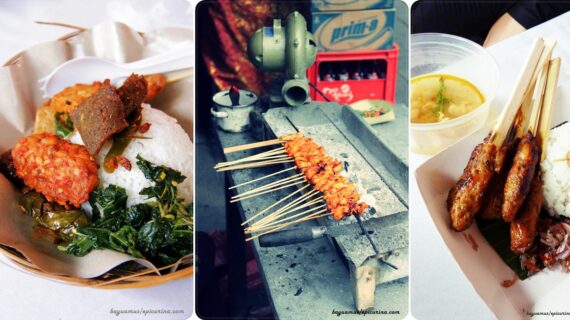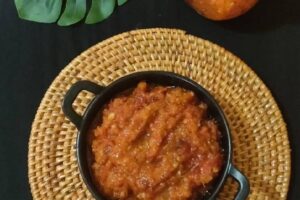Indonesia, a nation of over 17,000 islands, is not only rich in natural beauty but also in its culinary heritage. From the spicy sambals of Sumatra to the savory rendang of West Java, the country’s cuisine is a vibrant tapestry of flavors, textures, and traditions. These dishes have not only captivated locals but have also gained international recognition for their unique taste and cultural significance. In this article, we explore some of Indonesia’s most iconic foods that have made their mark on the global stage.
The Diversity of Indonesian Cuisine
Indonesian cuisine is as diverse as the archipelago itself, with each region offering its own distinct flavors and cooking techniques. This diversity stems from the country’s geographical spread, which includes tropical rainforests, mountainous regions, and coastal areas. The use of local ingredients such as coconut, lemongrass, and various spices plays a crucial role in shaping the nation’s culinary identity.
Some of the most popular dishes include asinan, a tangy and crunchy salad made from vegetables and fruits, and ayam goreng, crispy fried chicken seasoned with a blend of spices. These dishes are not only beloved by Indonesians but have also found their way into the hearts of food lovers around the world.
Iconic Dishes That Have Gone Global
-
Asinan
Asinan, particularly from Bogor and Betawi, is a refreshing mix of pickled vegetables and fruits. It is typically served with a vinegar or salt-based dressing, making it a perfect accompaniment to meals. -
Ayam Cincane
Originating from East Kalimantan, Ayam Cincane is a dish where chicken is cooked with a red spice mixture, giving it a distinctive flavor and color. -
Ayam Taliwang
This dish from Lombok features grilled chicken marinated with a mix of garlic, chili, and other spices, often served with a side of plecing kangkung (a water spinach salad). -
Bakso
Bakso, or meatballs, are a staple in Indonesian cuisine. They are usually served in a broth with noodles, vegetables, and sometimes with a spicy sauce. -
Gudeg
Gudeg, a sweet and savory dish from Yogyakarta, is made with young jackfruit, sugar, and spices. It is often accompanied by krecek, a type of crispy tofu. -
Rendang
Rendang, a slow-cooked beef dish from West Sumatra, has been recognized by UNESCO as an Intangible Cultural Heritage. Its rich, aromatic flavor is achieved through hours of simmering in coconut milk and a variety of spices. -
Sate
Sate, or skewered and grilled meat, is a favorite across Indonesia. It is typically served with a peanut sauce and can be made from various meats, including chicken, beef, and goat. -
Nasi Uduk
Nasi Uduk is a fragrant rice dish cooked with coconut milk, giving it a creamy texture. It is often served with a variety of side dishes like fried chicken, tempeh, and vegetables. -
Pempek
Pempek, a fish cake from Palembang, is a popular street food. It is made from a combination of fish and tapioca flour, often served with a sweet and sour sauce. -
Kerak Telor
Kerak Telor, a traditional Betawi dish, is a type of omelet made with rice and eggs, topped with coconut and fried shallots.
Regional Specialties and Their Unique Flavors
Indonesia’s regional specialties reflect the country’s rich cultural diversity. For example, Bubur Tinutuan from Manado is a hearty porridge made with root vegetables and leafy greens, while Sop Konro from Makassar is a flavorful beef soup. Each dish tells a story of the region’s history, geography, and traditions.
In the eastern part of the country, Papeda, a cassava-based porridge from Papua, is a staple dish often served with fish and a spicy sauce. Meanwhile, Udang Selingkuh, a unique shrimp dish from Papua, is known for its distinct flavor and presentation.
The Role of Spices and Local Ingredients
Spices play a vital role in Indonesian cuisine, adding depth and complexity to dishes. Common spices include turmeric, coriander, cumin, and lemongrass. These ingredients are often combined to create a balanced flavor profile that is both aromatic and delicious.
Local ingredients such as coconut milk, tamarind, and lemongrass are essential in many recipes. They contribute to the unique taste of Indonesian dishes and are used in everything from soups to desserts.
Conclusion
Indonesian cuisine is a celebration of flavor, culture, and tradition. From the bustling markets of Jakarta to the tranquil villages of Bali, every corner of the country offers a new culinary adventure. Whether you’re enjoying a plate of nasi goreng or savoring a bowl of gudeg, the experience is one that will linger in your memory. As more people discover the wonders of Indonesian food, it’s clear that these dishes have a place on the global culinary map. So next time you’re looking for a new dining experience, consider exploring the rich and diverse world of Indonesian cuisine.






